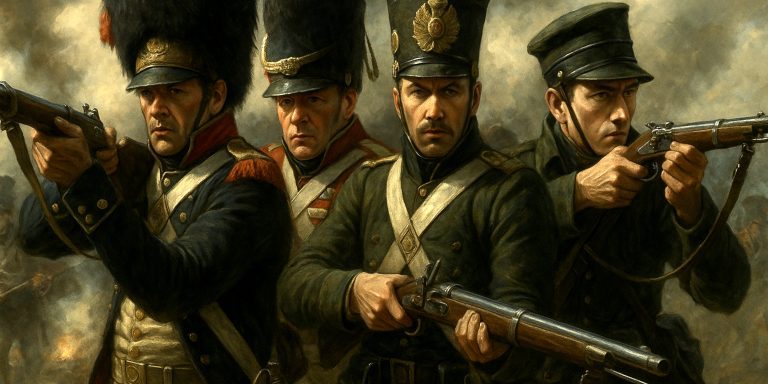
The Battle of Ashdown was fought in early January 871 AD, a time when Wessex faced relentless Danish incursions. The clash took place somewhere on the Berkshire Downs, near modern-day Compton or Kingstanding Hill. It was a turning point in the struggle between the West Saxons and the Great Heathen Army. Alfred, not yet king but already displaying the tenacity that would define his reign, stood shoulder to shoulder with his brother King Æthelred against a well-drilled Viking force.
While the chroniclers speak with terse clarity, their accounts carry the weight of a kingdom teetering between collapse and endurance. Ashdown, though only one battle in a grim year of warfare, helped forge the myth of Alfred as England’s defender.
Background
The winter of 870–871 was brutal for Wessex. The Vikings, fresh from victories in East Anglia and Mercia, poured into the Thames Valley. They had already taken Reading, which served as their fortified base. Æthelred and Alfred, leading the West Saxon fyrd, met them in the surrounding hills.
Contemporary records, notably the Anglo-Saxon Chronicle and Asser’s Life of King Alfred, describe how the Saxons mustered hastily, their morale bruised but not broken. The Vikings, confident after a series of triumphs, sought to crush Wessex entirely.
Forces
| Side | Leaders | Estimated Troop Strength | Composition |
|---|---|---|---|
| West Saxons | King Æthelred, Prince Alfred | 800–1,200 | Fyrd levies, Thegns, Household troops |
| Danes (Great Heathen Army) | Kings Bagsecg and Halfdan Ragnarsson | 1,000–1,500 | Professional warriors, shield walls, archers, some cavalry |
Arms and Armour
The Saxons and Danes were evenly matched in arms, though the Norse often favoured heavier mail and longer axes. The West Saxons relied on disciplined shield walls and local levies armed with what they could muster.
Typical Weapons and Equipment:
- Swords: Pattern-welded spathas and Petersen Type H and K blades; Anglo-Saxon ring-pommel swords also common.
- Axes: Viking bearded axes, occasionally the heavier two-handed Dane axe.
- Spears: Most soldiers carried broad-headed spears or throwing javelins.
- Shields: Round wooden shields with iron bosses, often painted.
- Armour: Mail hauberks for nobles; leather and quilted garments for most levies.
- Helmets: Few full helms survived, but conical iron helmets and nasal guards were likely used; a Sutton Hoo-style faceplate might have still symbolised authority for higher ranks.
The battle would have been a contest of endurance. Shield walls clashed, swords rang against iron rims, and visibility was often reduced by fog, as Asser later recorded.
The Battle
The armies met on high ground, probably near Ashdown Ridge. The Vikings had seized the better position, forming two divisions, one under their kings, the other under their earls. The West Saxons mirrored this structure.
According to Asser, Æthelred insisted on hearing Mass before entering the fray, leaving Alfred to take the initiative. Impatient and perhaps realising the tactical disadvantage, Alfred led a sudden charge uphill, breaking into the Danish line before they could fully organise.
The surprise worked. The Saxon shield wall pushed the Vikings back, seizing the summit and turning the tide. In the melee, the Danish kings were reportedly slain, including Bagsecg, whose death symbolised a rare Saxon triumph. The battlefield, strewn with bodies and broken shields, marked a short-lived but vital respite for Wessex.
Archaeology
The precise location of Ashdown remains debated. Compton Down and Kingstanding Hill both claim association, and several finds in the area hint at large-scale conflict:
- Metal Detecting Finds: Saxon and Norse spearheads, shield bosses, and a few broken sword fragments consistent with late 9th-century types.
- Place Names: “Blood Hill” and “Battle Down” in local maps sustain the oral tradition.
- Burial Sites: Several tumuli in the region have yielded cremation urns and weapon fragments, though most date earlier.
No definitive mass graves have been found, but the geography of the Downs, with its ridges and ditches, matches Asser’s description of a hilltop struggle.
Battle Timeline
| Time | Event |
|---|---|
| Early January 871 | Viking forces occupy Reading, fortifying their camp. |
| 3–7 January | West Saxons muster nearby; skirmishes occur near Englefield. |
| 8 January (Battle of Ashdown) | Armies meet on the Downs; Æthelred attends Mass as Alfred takes command. |
| Midday | Alfred’s charge catches the Vikings off-guard; fierce hand-to-hand combat follows. |
| Afternoon | Bagsecg and several Viking leaders are slain; Vikings retreat to Reading. |
| Aftermath | Saxons win the field but suffer heavy losses; morale lifted across Wessex. |
Contemporary Quotes
“King Æthelred and Alfred, his brother, fought against all the army and put them to flight.”
– Anglo-Saxon Chronicle (871)
“Alfred, though second in command, led the charge, for the king tarried at Mass; God granted him victory for his faith and valour.”
– Asser, Life of King Alfred
Seven Swords Takeaway
Ashdown did not end the Danish threat, but it proved that Wessex would not fold as Northumbria and East Anglia had. The morale boost it provided sustained the West Saxons through later defeats that year, and it marked the emergence of Alfred as a commander of rare nerve and vision.
It was, in essence, the first glimpse of the leader who would later be called the Great. One suspects that if he had waited for the priest that morning, the outcome might have been very different.



